Inside the last surviving portion of the original World Trade Center, a passageway to a lost time
This corridor is where the original WTC meets the new one, where eras collide as much as architectural styles. It's the most uncommon of common spaces.
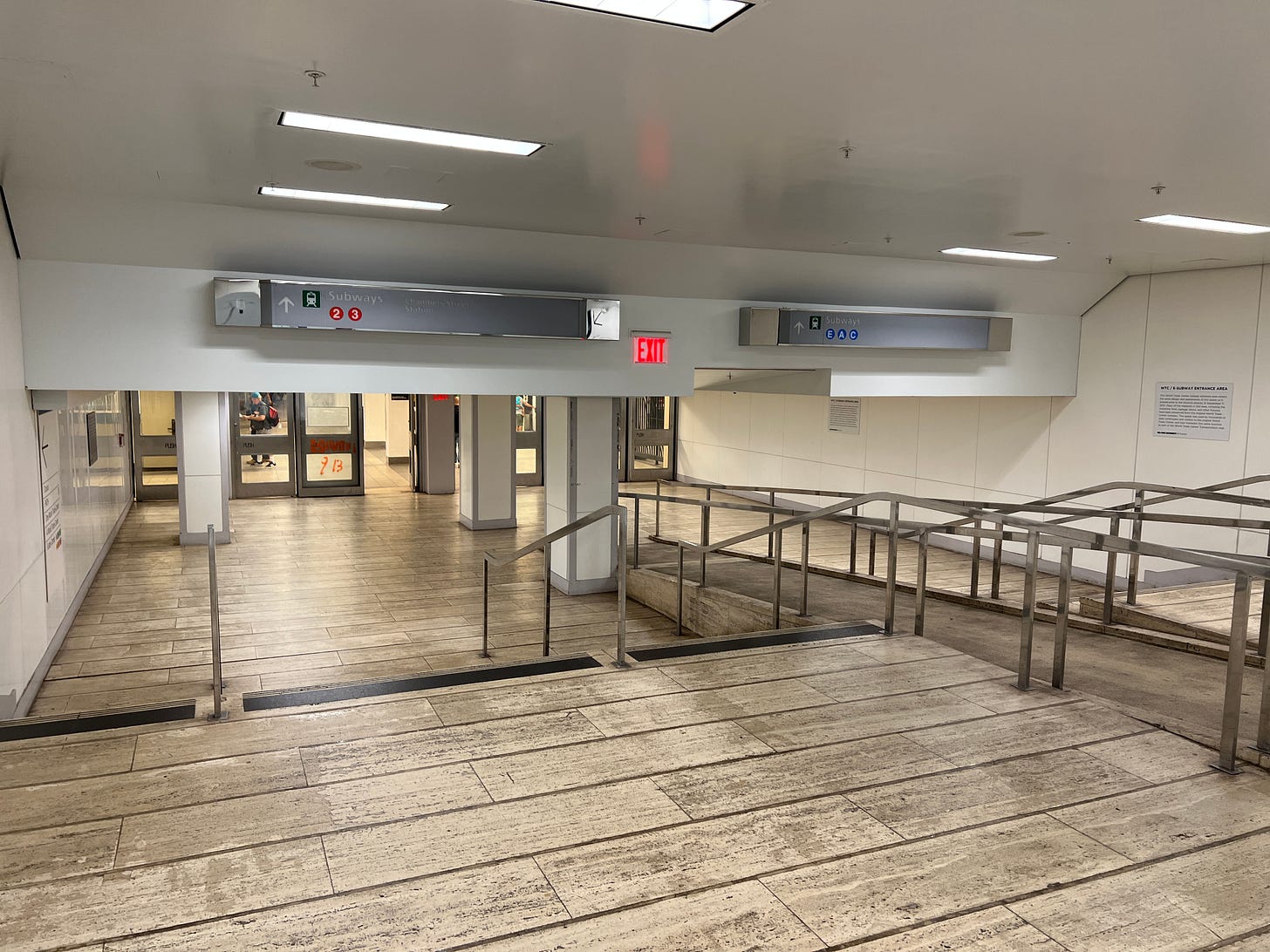
On Wednesday, Sept. 13, 2023, a new era dawned at the World Trade Center, bringing something both versions of the complex never had until now: A space dedicated to the performing arts.
Of course, the original trade center had Austin Tobin Plaza, the windswept expanse between the Twin Towers and enclosed by the Marriott World Trade Center, where outdoor concerts were held. It is one of the fondest memories people have of the old World Trade Center, an experience that humanized a space that could feel barren and intimidating.
Today, the Perelman Performing Arts Center was officially dedicated, representing a big, bold new space for the arts in New York, a jewel-like, scintillating cube, in a way echoing the square bases of the current and former World Trade Center towers.
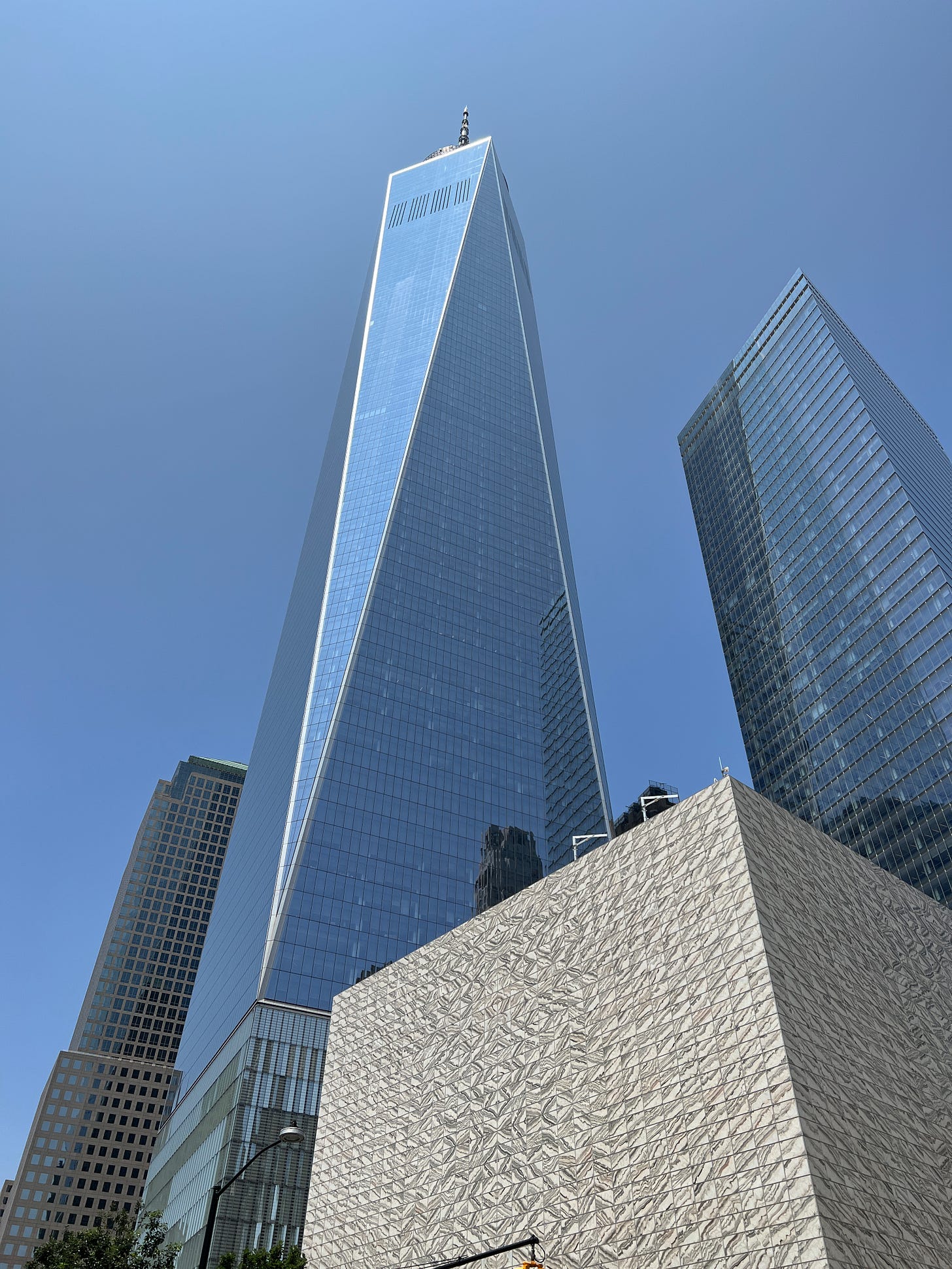
Outside, there will be space for events, along with a grand staircase we can only hope becomes a town square — or a “public stoop,” as Michael Kimmelman puts it in the New York Times. The current trade center lacks that unifying “outdoor plaza” the original complex had.
As we celebrate the latest addition to the new World Trade Center, let’s contemplate the last surviving element of the original, one that most people visiting the site surely miss, but that is, in a way, as important as any exhibit in the nearby 9/11 Museum.
Indeed, it’s the one place left at the World Trade Center where one can experience life as it was here before Sept. 11, 2001.
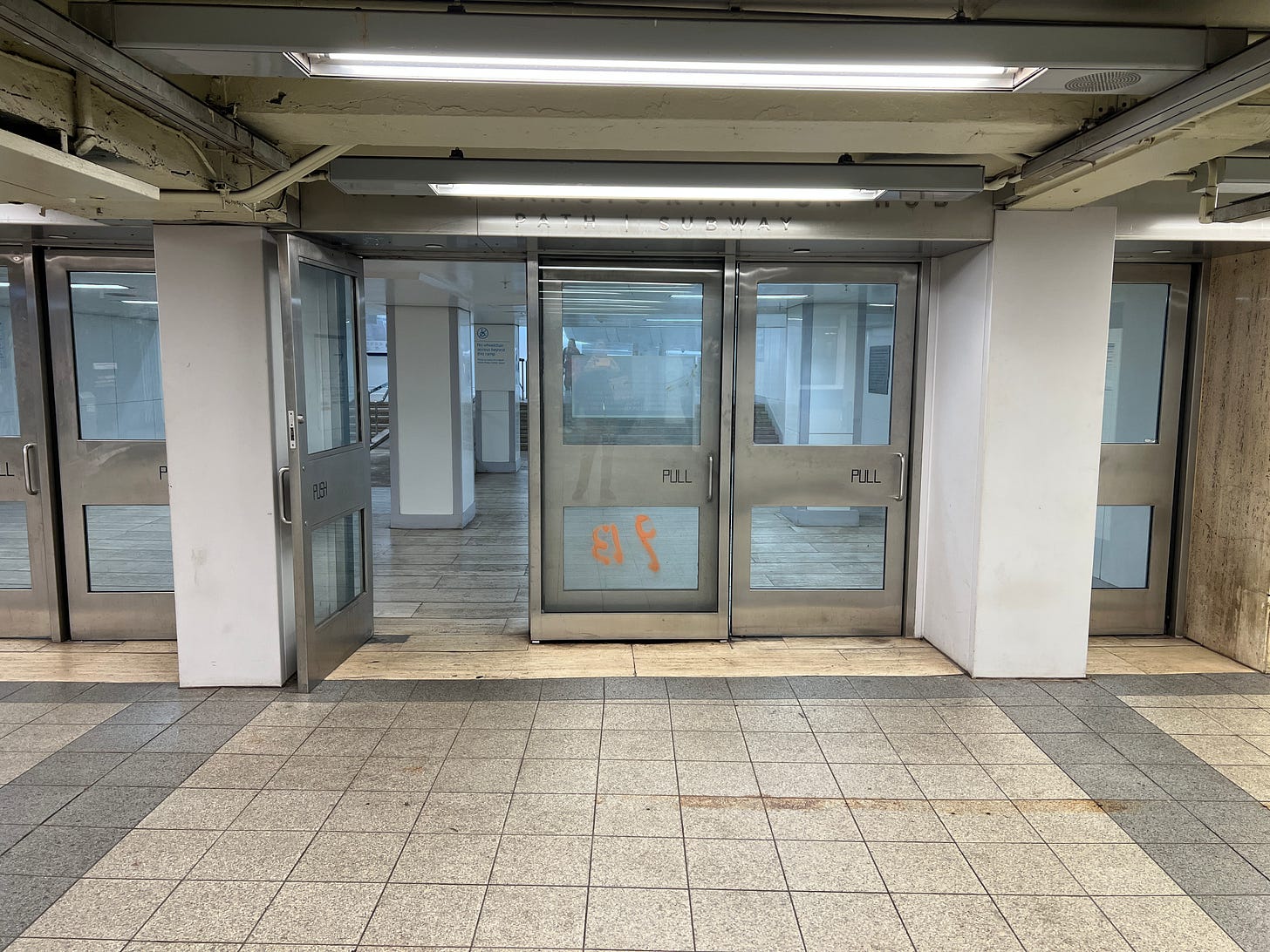
At the northeast corner of the site survives a corridor that connects the E train subway platform to the World Trade Center PATH station and Oculus shopping mall.
It consists of a 50-foot-long hallway clad in travertine marble, rails, doors, and signage that was part of the original World Trade Center. It gives you a very small glimpse of the very grand complex that was destroyed by terrorists.
In fact, this stub of the lost WTC concourse is all that's left of the site's original architecture. Unlike The Sphere, a sculpture that survives, battered but beautiful, in a park nearby, or the remnants of Twin Tower steel and Minoru Yamasaki’s Gothic tridents, or the Survivors Staircase, now on exhibit at the 9/11 Museum, the corridor is used just as it was during the life of the original World Trade Center.
“This space was used by thousands of daily commuters and visitors to the original World Trade Center, and now maintains this same function as part of the World Trade Center Transportation Hub,” reads a sign in the corridor, pictured below.
This old corridor now leads to new shops and the buildings that succeeded the Twin Towers in the skyline.
This corner of the site was farthest from the collapses of the Twin Towers, explaining how the corridor was able to survive intact. Larger portions of the underground shopping mall did survive the collapses, too, and artifacts from them, including statues from the Warner Brothers Store, were salvaged, but the mall remnants were demolished, a necessary step in the rebuilding of the site.
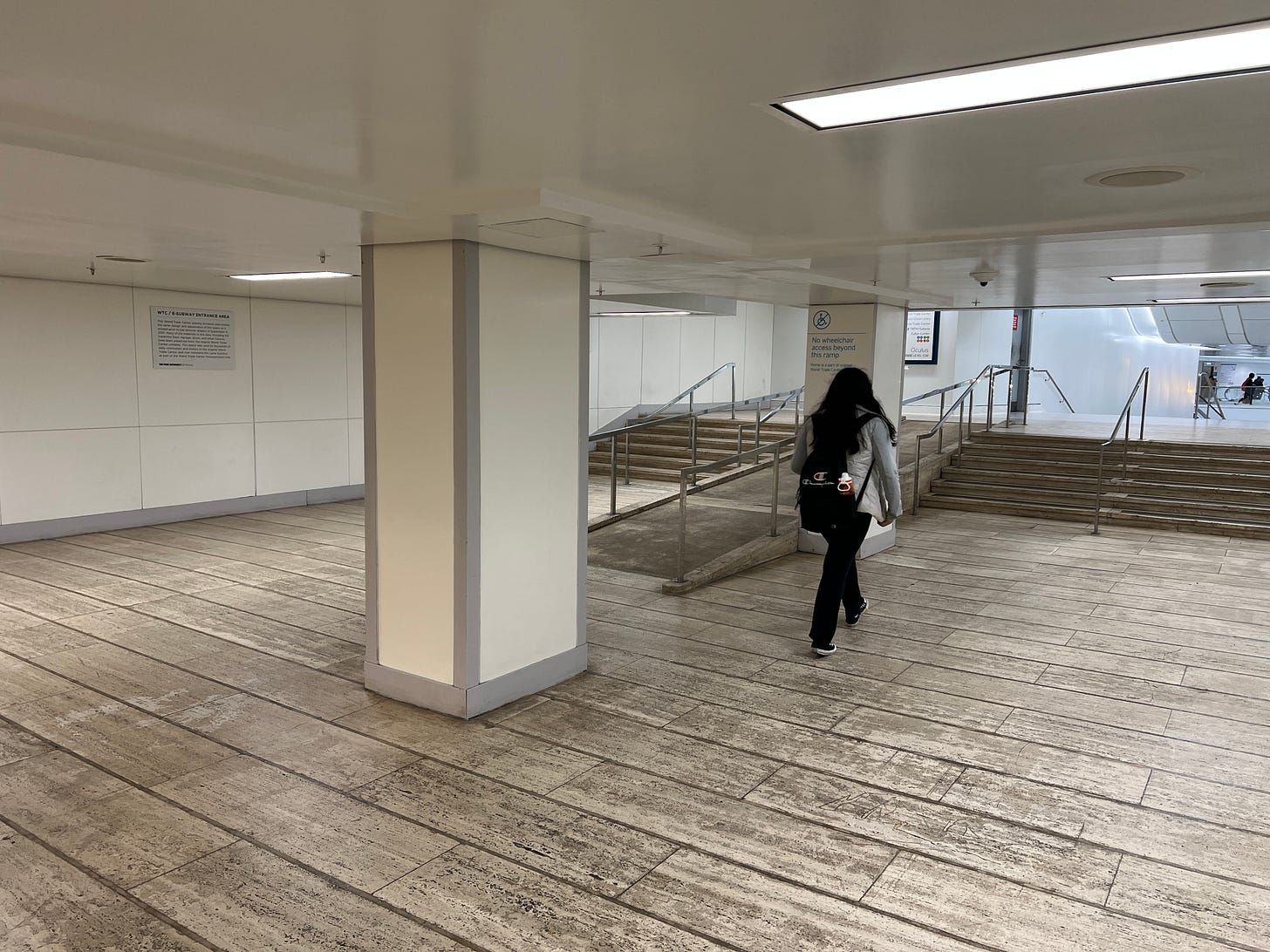
As you enter this preserved corridor, you are immediately struck by the realization that something is different here. One of the doors leading to the passageway will forever feature graffiti from rescue workers, indicating that they had searched the area on Sept. 13, 2001 (9/13) – 22 years ago today. The ‘X” indicates they deemed the area unsafe (X marking the spot). Other initials indicate the agency that had inspected the space (FEMA’s Massachusetts Task Force.)
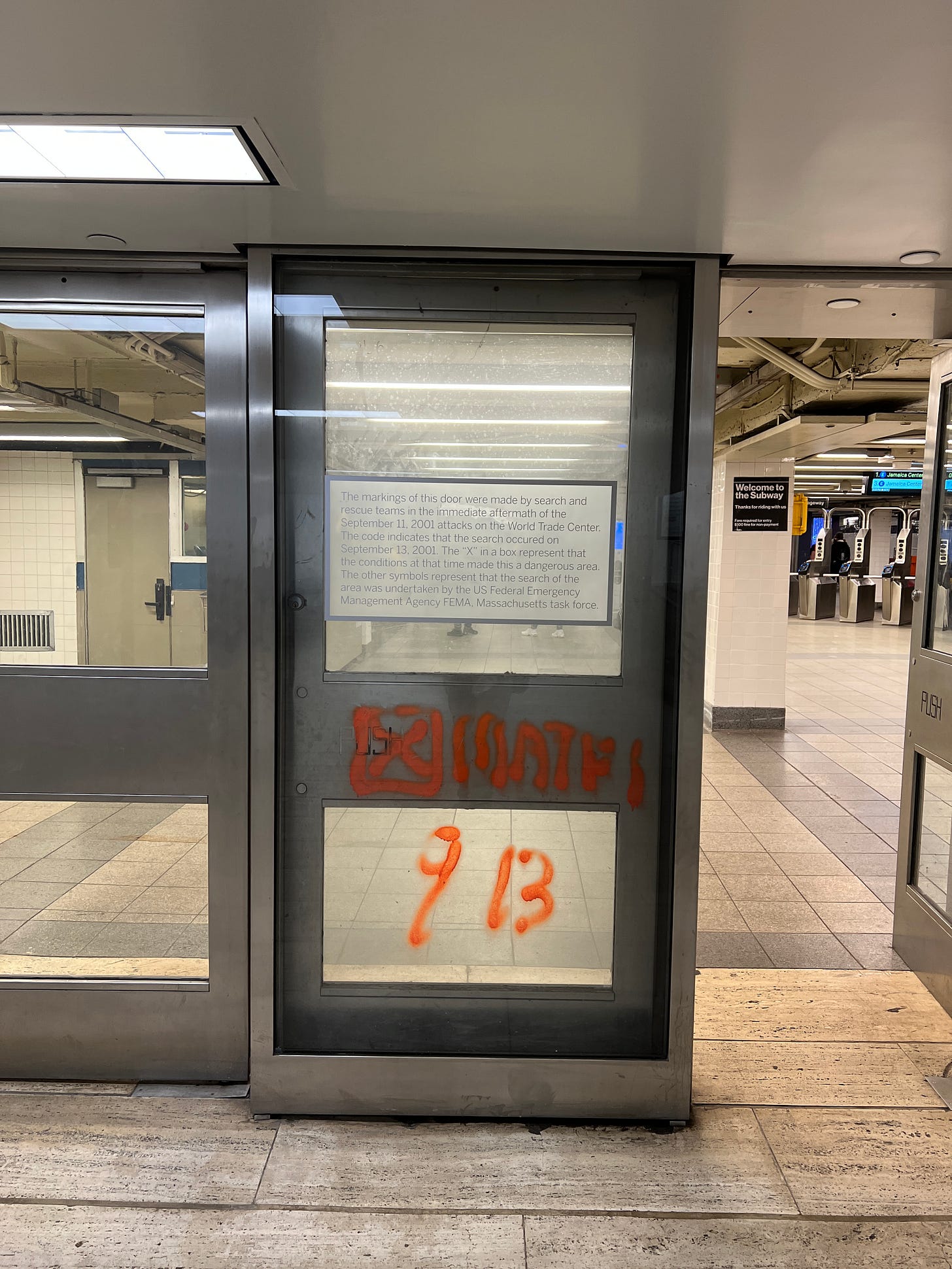
The typeface etched into doors (PUSH, PULL) has a 1970s vibe, and the signage for the subway lines has a sheen that fits into the overall look of the complex when the majestic Twin Towers still crowned it.
Commuter corridors in Manhattan’s Financial District are hardly places for contemplation – stop and think for a moment, and you might get trampled in a New York minute – but this is not your typical transit passageway, though it surely looks it.
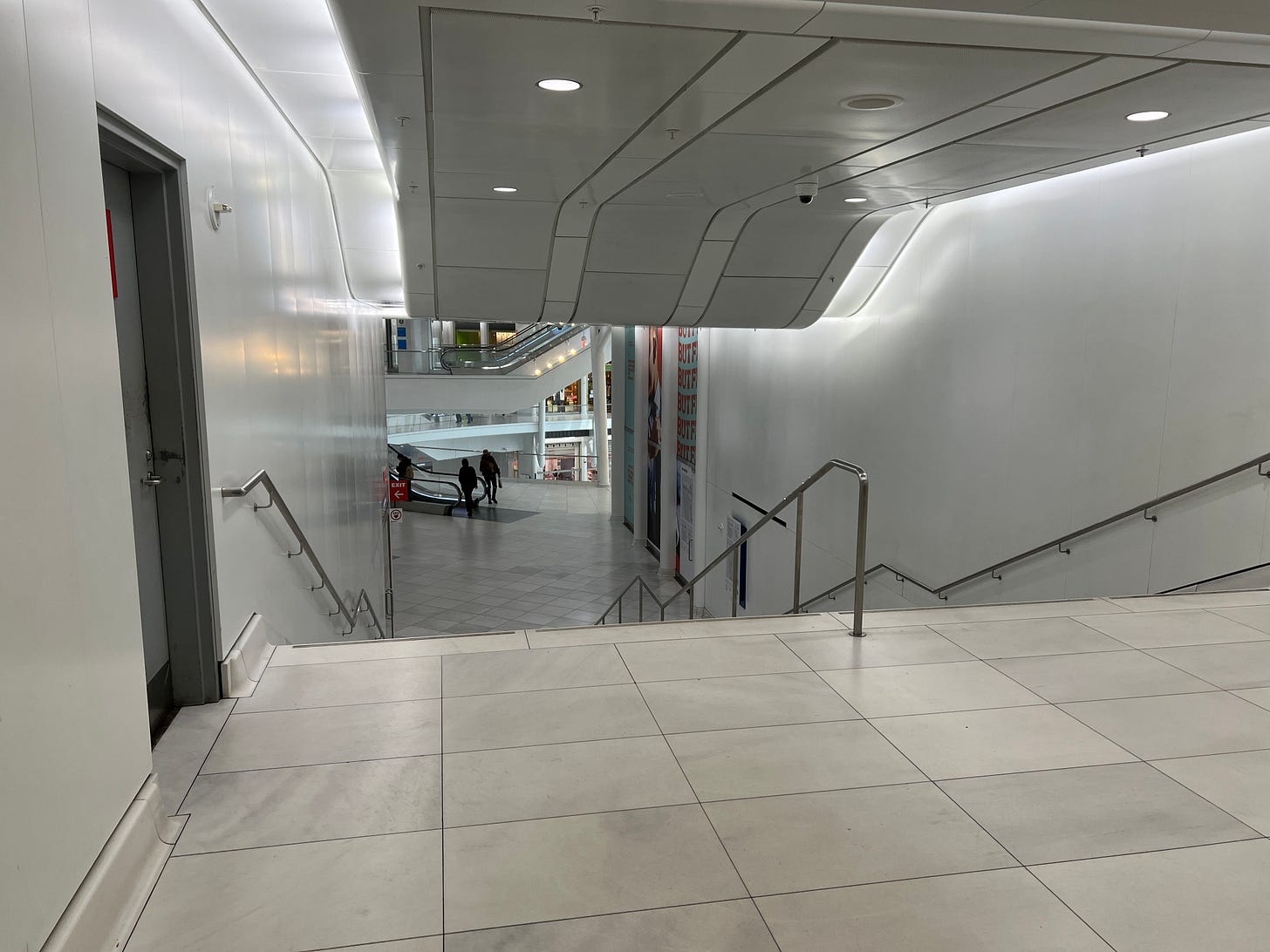
That the corridor is so ordinary is a quiet reminder of how ordinary life was at the World Trade Center.
Until it wasn’t.





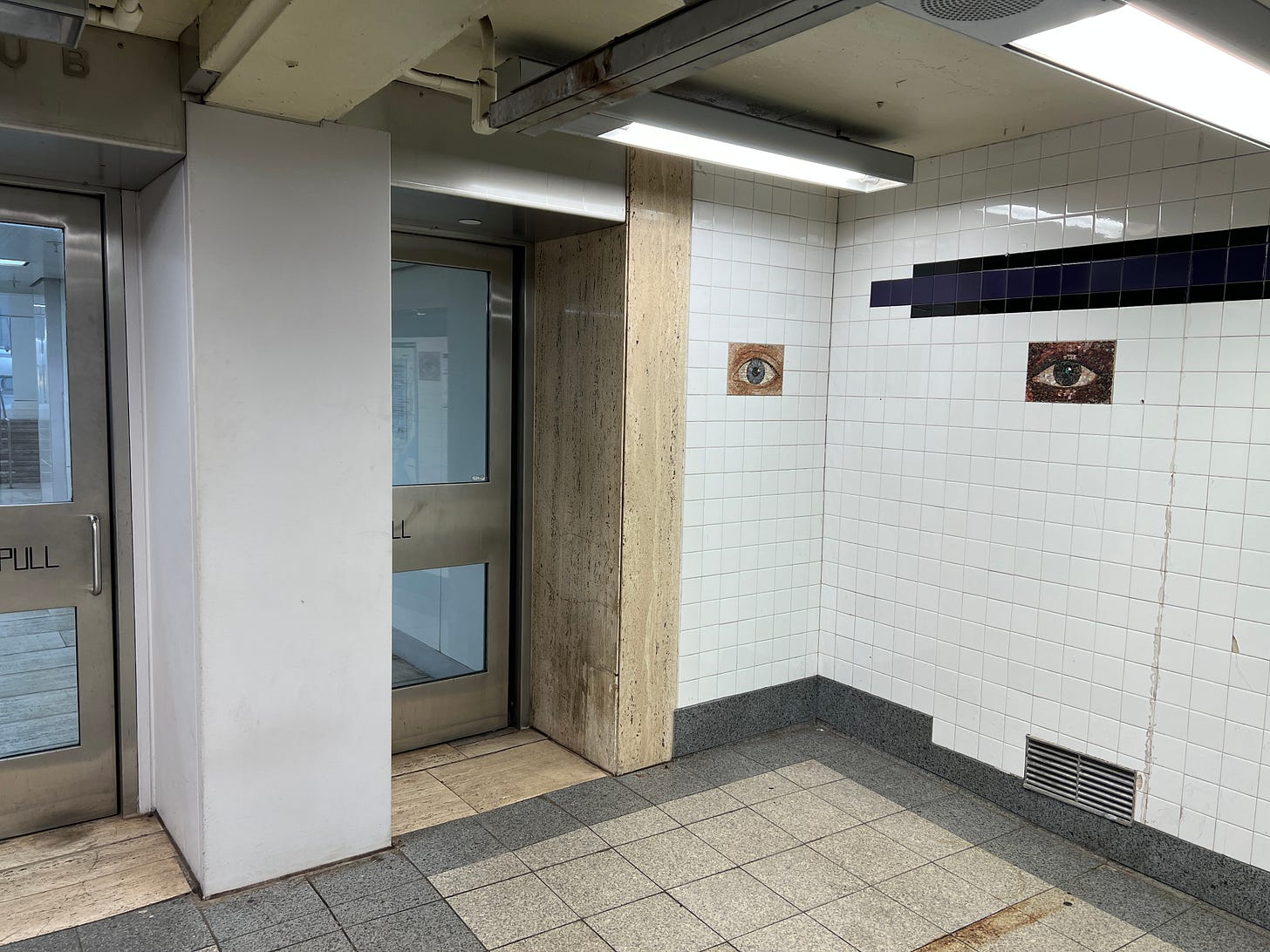
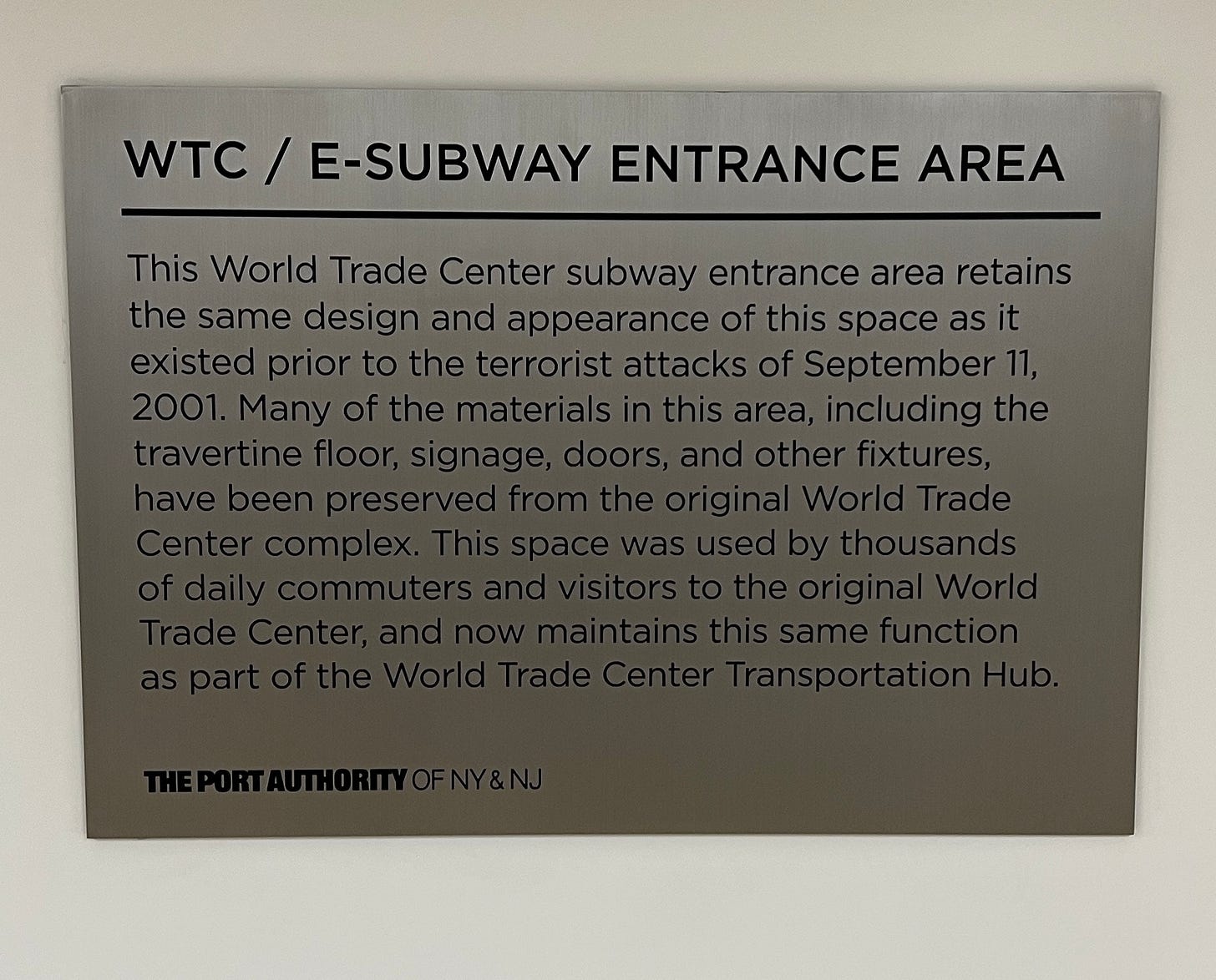
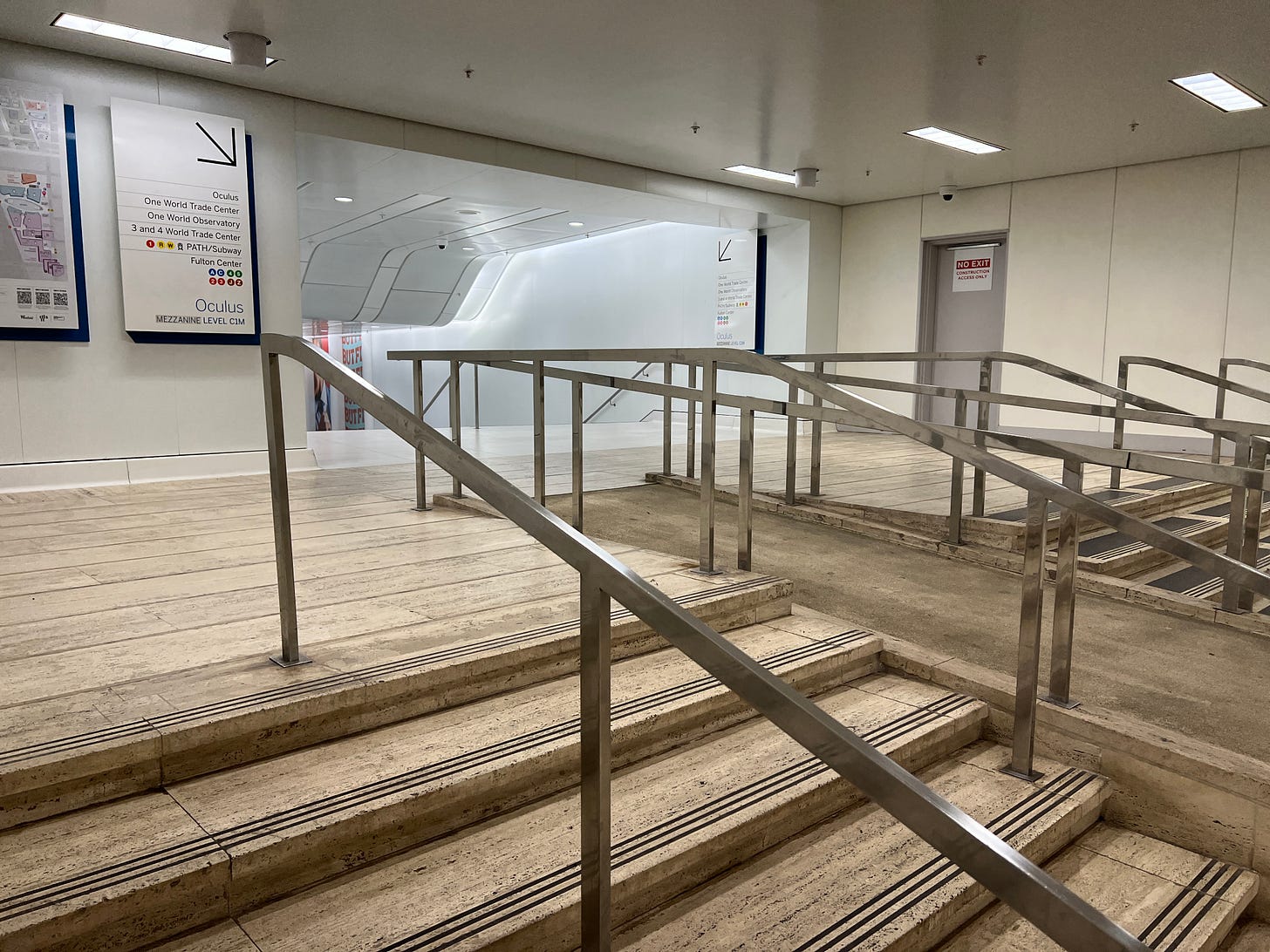
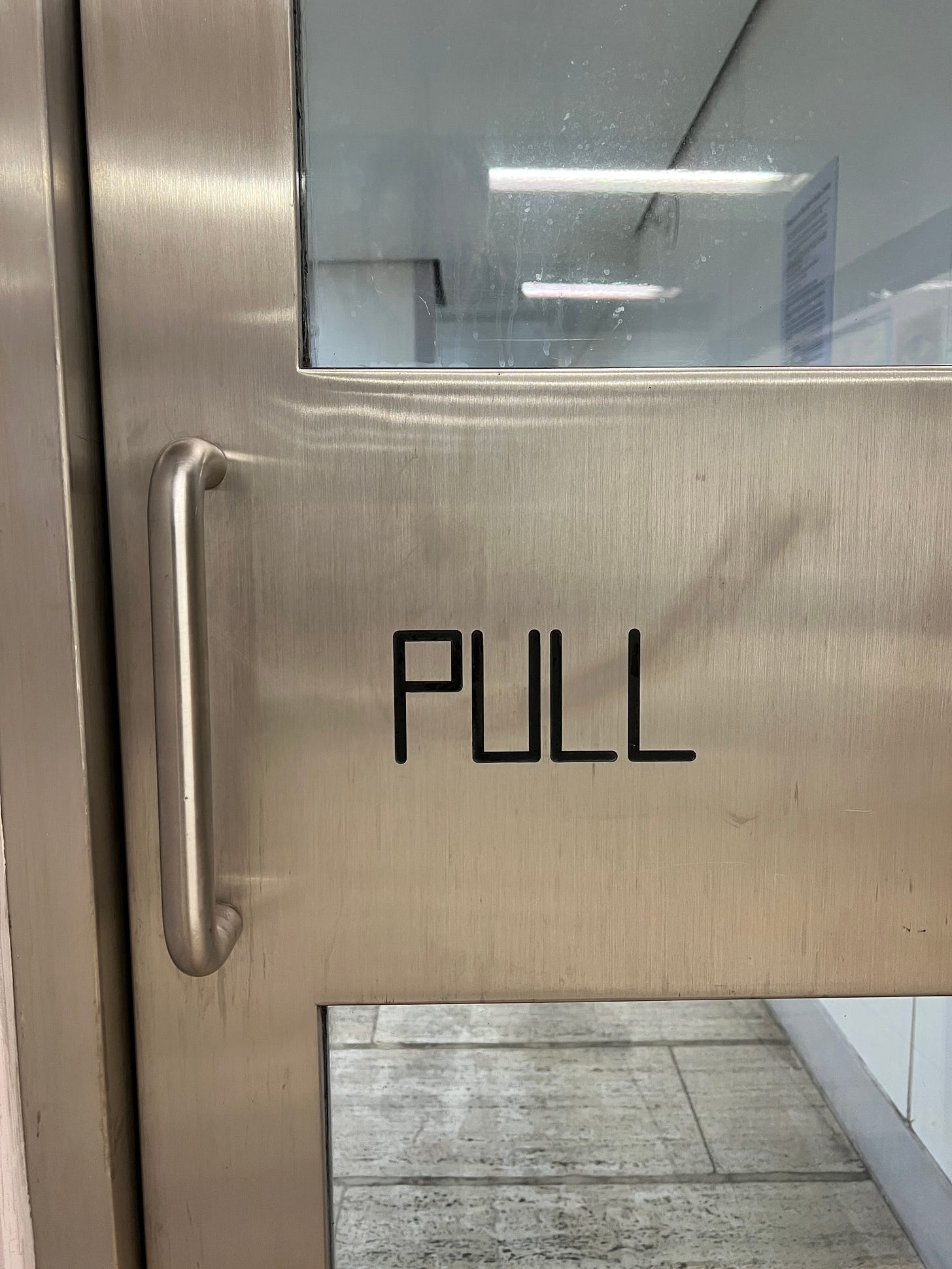


Thank you for this tribute, Rolando. I feel very moved by the image of the old stone next to new tile. Very glad they've kept what they could.
What a remarkable story. I never knew this or have seen these images. Thanks so much for sharing this.